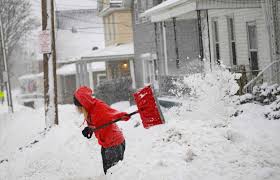A Winter Weather Advisory has been issued for the South Washington Cascades, with up to 8 inches of snow expected along with strong wind gusts through Thursday morning. The National Weather Service (NWS) is warning residents and travellers of hazardous conditions that could lead to dangerous roads, poor visibility, and icy surfaces.
How Much Snow Will Fall?
Forecasters predict snowfall totals between 4 to 8 inches for higher elevations above 3,500 feet. Areas such as Mt. St. Helens, Larch Mountain, and the Indian Heaven Wilderness will be hit hardest.
In addition to the snow, wind gusts of up to 35 mph could create blowing and drifting snow, making visibility extremely low at times. These conditions will make travel especially dangerous on mountain roads and passes.
Who Will Be Affected?
This storm is expected to impact parts of Southwest Washington and Northern Oregon, with the worst conditions occurring in mountainous areas. Travellers heading into higher elevations should prepare for rapidly changing conditions and possible road closures or chain requirements.
Travel Warnings and Safety Precautions
Authorities are urging people to avoid unnecessary travel, as icy roads and drifting snow could create hazardous conditions overnight and into early Thursday. If travel is unavoidable, drivers should carry emergency supplies, including:
- Extra blankets and warm clothing
- Flashlights and batteries
- Food, water, and essential medications
- Tire chains and a full gas tank
The Washington State Department of Transportation (WSDOT) and Oregon Department of Transportation (ODOT) are monitoring conditions and will provide updates on road closures, chain requirements, and traffic slowdowns.
What’s Next?
The storm is expected to move out of the region by Thursday afternoon, but cold temperatures will persist, meaning icy conditions could remain on roads and highways for the next few days. Commuters should check the latest travel updates and be prepared for lingering winter weather impacts.
For real-time updates, visit the National Weather Service, WSDOT, or ODOT websites. Stay safe, stay warm, and be prepared for winter weather conditions in the South Washington Cascades.

